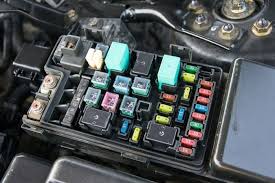How to Change Fuses in a Car: 6 Steps

Cars rely on several electrical components to perform different tasks. One key component of your car’s electrical system is the fuse, which protects the circuits from becoming overloaded. Fuses prevent damage and potential fire hazards by interrupting the flow of electrical current if a circuit becomes overloaded or experiences a short circuit. Therefore, it is essential to know how to change fuses in your car when they blow out. Here are six simple steps to change fuses in your car.
1. Locate the fuse box:
The first step is locating your car’s fuse box. It generally resides under the dashboard on the driver’s side or beneath the hood near the battery. Consult your car owner’s manual for its exact location.
2. Identify the faulty fuse:
Once you’ve found the fuse box, look at its diagram or refer to your owner’s manual to determine which fuse corresponds with the malfunctioning system. Fuses may be color-coded and numbered for easy identification.
3. Remove the faulty fuse:
Before you remove the blown fuse, turn off your vehicle and disconnect its negative battery cable to avoid electrical issues or short circuits. Use a pair of needle-nose pliers or a dedicated fuse puller tool (usually found in the fuse box) to safely extract the damaged fuse from its slot.
4. Inspect and verify:
Examine the removed fuse closely; if it’s blown, you will see a broken wire or a black soot-like residue inside the plastic casing. This confirms that you have located and extracted the problematic fuse.
5. Replace with a new fuse:
Acquire a new, identical fuse with matching amperage (as indicated on either side of your old fuse). Push it firmly into place within the empty slot until it fully seats itself.
6. Test and reattach cover:
Reconnect your negative battery cable and switch on your car’s ignition. Operate the related electrical component—such as lights, radio, or windows—to ensure that it functions correctly after the fuse change. If it works as intended, reattach the fuse box cover and secure it firmly in place.
Remember that changing a blown fuse is only a temporary fix. Regularly inspecting your car’s fuses and having any underlying issues assessed by a professional mechanic will ensure the longevity of your car’s electrical system and overall performance.






